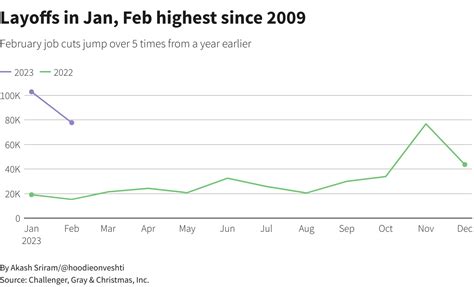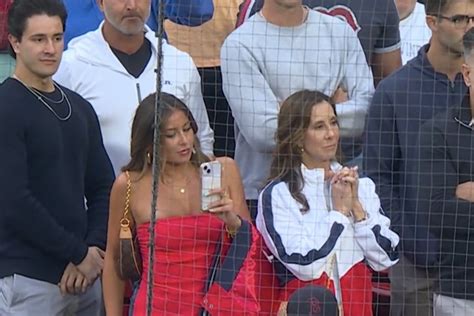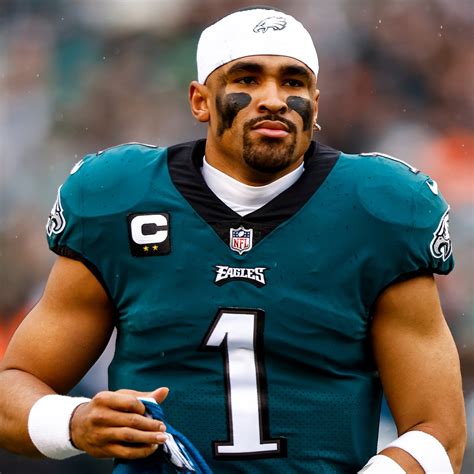
One-handed ball control, a skill often debated for its flash over function, has received a surprising endorsement from legendary NBA coach Phil Jackson, who believes mastering this technique can significantly hinder defensive strategies. Jackson highlighted the challenges defenders face when an offensive player can maintain control of the ball with a single hand, creating unpredictable movements and passing angles.
Phil Jackson, the Zen Master of basketball, has reignited the debate surrounding one-handed ball control, arguing that its mastery presents a considerable challenge for defensive players. Speaking on the “Curmudgeons” podcast, Jackson emphasized the difficulty defenders face when an offensive player demonstrates the ability to maintain possession and manipulate the ball effectively with just one hand. He specifically noted how this skill can open up unique passing lanes and create offensive opportunities that are otherwise unavailable.
“If a guy can pick the ball up and control it with one hand, it makes it very difficult for the defense,” Jackson stated, highlighting the inherent advantage gained by the offensive player. This endorsement from a coach renowned for his strategic acumen and championship pedigree has once again brought the often-criticized move into the spotlight. The perception of one-handed ball control often oscillates between being seen as a flashy, unnecessary maneuver and a legitimate offensive weapon. Jackson’s comments suggest that, when executed correctly, it can be a powerful tool in disrupting defensive schemes.
The core of Jackson’s argument rests on the increased difficulty in defending a player who possesses this skill. The traditional defensive stance and anticipation are compromised because the offensive player’s movements and passing options become less predictable. A player who can palm the ball or control it with their fingertips can change direction, release the ball at unexpected angles, and maintain a wider field of vision, thus keeping the defender guessing. This element of unpredictability forces the defender to react rather than anticipate, which can lead to defensive breakdowns and scoring opportunities for the offense.
Jackson’s perspective offers a counterpoint to the conventional wisdom that often prioritizes two-handed control for security and stability. While two-handed ball handling remains the foundation of basketball fundamentals, Jackson’s observation suggests that incorporating one-handed control into a player’s repertoire can add a layer of complexity that enhances their offensive capabilities. This is particularly relevant in today’s NBA, where offensive creativity and versatility are highly valued.
The “Curmudgeons” podcast appearance provided Jackson with a platform to delve deeper into the nuances of basketball strategy and player development. His comments on one-handed ball control were not made in isolation but were part of a broader discussion on the evolving nature of the game and the importance of adapting to new trends and techniques. Jackson’s ability to identify and articulate subtle advantages, like the one afforded by one-handed ball control, underscores his reputation as one of the most insightful minds in basketball history.
The debate surrounding one-handed ball control has been ongoing for years, with various coaches, players, and analysts offering differing opinions. Critics often argue that it is a risky move that increases the likelihood of turnovers and exposes the ball to defensive pressure. They contend that two-handed control provides a more secure grip and allows for quicker reactions to defensive challenges.
However, proponents of one-handed ball control argue that it enhances a player’s ability to survey the court, make quick decisions, and execute unconventional passes. They point to examples of players who have successfully incorporated this skill into their game, using it to create scoring opportunities for themselves and their teammates. The key, they emphasize, is mastering the technique and using it judiciously in appropriate situations.
Jackson’s endorsement adds weight to the argument in favor of one-handed ball control, given his track record of success and his deep understanding of the game. His comments are likely to spark further discussion and analysis among coaches and players at all levels of basketball. It will be interesting to see if this leads to a greater emphasis on developing this skill in training programs and whether it becomes a more prevalent feature of offensive strategies in the future.
One-handed ball control is not simply about showboating or adding flair to one’s game; it’s about creating a tactical advantage that can disrupt defensive strategies. Jackson’s assertion is rooted in the idea that unpredictability is a valuable asset in basketball. When a player can control the ball with one hand, they can manipulate the ball’s position and trajectory in ways that are difficult for defenders to anticipate. This can lead to open passing lanes, driving opportunities, and scoring chances that would not be available with traditional two-handed ball handling.
The skill also requires a high degree of dexterity and hand strength. Players must be able to maintain a firm grip on the ball while simultaneously dribbling, pivoting, and maneuvering around defenders. This level of control allows them to make split-second decisions and react quickly to changing defensive alignments. Furthermore, it allows the player to protect the ball from steals and deflections, as they can quickly adjust their grip and position to shield the ball from opposing players.
From a psychological perspective, one-handed ball control can also give the offensive player a mental edge. The ability to confidently handle the ball with one hand can intimidate defenders and make them hesitant to apply pressure. This hesitation can create space and time for the offensive player to make plays, further enhancing their effectiveness. However, it is important to note that one-handed ball control is not a substitute for fundamental skills. It is a supplementary technique that should be used in conjunction with solid ball handling, passing, and shooting abilities. Players must first master the basics before attempting to incorporate one-handed control into their game.
One-handed ball control, when properly executed, can open up a world of possibilities for an offensive player. It allows them to see the court more clearly, make quicker decisions, and execute passes that would be impossible with two hands. This added versatility can make them a more dangerous and unpredictable offensive threat. Phil Jackson’s recent comments serve as a reminder that basketball is a game of constant evolution, and that players and coaches must always be open to exploring new techniques and strategies. While one-handed ball control may not be for everyone, it is a skill that, when mastered, can provide a significant advantage on the court.
In addition to the tactical advantages, one-handed ball control can also contribute to a player’s overall offensive flow and rhythm. By freeing up one hand, players can use it to create separation from defenders, shield the ball, or even subtly push off to gain an advantage. This can be particularly effective in one-on-one situations, where the ability to create space is crucial.
However, it is essential to emphasize that one-handed ball control is not without its risks. If not executed properly, it can lead to turnovers and defensive breakdowns. Players must be able to maintain a secure grip on the ball and protect it from opposing players. They must also be able to quickly transition to two-handed control when necessary, such as when driving to the basket or making a contested pass.
Ultimately, the decision of whether or not to incorporate one-handed ball control into one’s game is a personal one. It depends on a player’s skill level, athleticism, and playing style. However, Phil Jackson’s recent comments suggest that it is a skill that is worth considering, especially for players who are looking to add a new dimension to their offensive game.
The debate surrounding one-handed ball control also highlights the importance of adaptability and innovation in basketball. The game is constantly evolving, and players and coaches must be willing to embrace new techniques and strategies in order to stay ahead of the curve. While traditional skills and fundamentals remain essential, the ability to adapt and innovate is what separates the good players from the great ones.
Phil Jackson’s endorsement of one-handed ball control is a testament to his open-minded approach to the game. Despite his long and storied career, he remains willing to challenge conventional wisdom and explore new possibilities. His comments serve as a reminder that basketball is a game of constant learning and that there is always room for improvement.
In conclusion, one-handed ball control is a skill that can be both advantageous and risky. When mastered and used judiciously, it can enhance a player’s offensive capabilities and create challenges for the defense. However, it is not a substitute for fundamental skills and should be used in conjunction with solid ball handling, passing, and shooting abilities. Phil Jackson’s recent comments have reignited the debate surrounding this technique and serve as a reminder of the importance of adaptability and innovation in the ever-evolving game of basketball.
The practical application of one-handed ball control also extends beyond simple dribbling. It can be utilized in various scenarios such as:
- Post Play: In the post, a player with one-handed control can use their free hand to create space, fend off defenders, and maintain better balance while positioning for a shot or pass.
- Transition Offense: During fast breaks, maintaining control with one hand allows a player to scan the court for open teammates while dribbling at high speed, leading to faster and more effective passes.
- Pick-and-Roll: A player coming off a screen can use one-handed control to maintain momentum while assessing passing options or driving lanes, making them more unpredictable for the defending team.
- Isolation Plays: In isolation situations, the freedom offered by one-handed control provides more options for manipulating the ball, creating separation, and attacking the basket.
These examples demonstrate that one-handed ball control is not just a flashy maneuver but a versatile tool that can enhance a player’s effectiveness in various offensive situations. The key lies in mastering the skill and understanding how to apply it appropriately.
Further analysis of the technique reveals that it relies on several key elements:
- Grip Strength: Developing strong hand and finger muscles is essential for maintaining control of the ball. This can be achieved through specific exercises and drills that focus on grip strength and hand dexterity.
- Ball Awareness: A player must have a keen sense of the ball’s position and trajectory at all times. This allows them to make quick adjustments and react to changes in defensive pressure.
- Body Control: Maintaining balance and coordination is crucial for executing one-handed ball control effectively. Players must be able to move fluidly and maintain their center of gravity while dribbling and maneuvering.
- Vision: The ability to see the court and anticipate defensive movements is essential for making smart decisions and executing successful plays. One-handed control allows for a wider field of vision, enabling players to make better reads and react more quickly.
By focusing on these elements, players can develop the skills necessary to master one-handed ball control and incorporate it into their game. However, it is important to emphasize that this technique is not a quick fix or a substitute for fundamental skills. It requires dedication, practice, and a deep understanding of the game.
The historical context of one-handed ball control is also worth exploring. While it may not have always been a widely embraced technique, there have been players throughout basketball history who have successfully utilized it to their advantage. Players like Marques Johnson and Connie Hawkins, known for their exceptional ball-handling skills and creativity, often incorporated one-handed moves into their offensive repertoire. These players demonstrated that one-handed ball control could be a legitimate offensive weapon when executed with skill and finesse.
In today’s NBA, there are several players who occasionally use one-handed ball control, although it is not a dominant feature of their game. Players like LeBron James, Kyrie Irving, and Stephen Curry have all demonstrated the ability to control the ball with one hand at times, using it to create space, make passes, or execute unconventional moves. However, these players also rely heavily on traditional two-handed ball handling techniques, and one-handed control is typically used sparingly in specific situations.
The use of one-handed ball control often depends on the individual player’s style and skill set. Some players are naturally more inclined to experiment with unconventional techniques, while others prefer to stick to the fundamentals. Ultimately, the decision of whether or not to incorporate one-handed control into one’s game is a personal one.
The impact of Phil Jackson’s comments on one-handed ball control remains to be seen. It is possible that his endorsement will lead to a greater emphasis on developing this skill in training programs and that it will become a more prevalent feature of offensive strategies in the future. However, it is also possible that his comments will be met with skepticism and that one-handed ball control will remain a relatively niche technique.
Regardless of the outcome, Jackson’s comments have sparked a valuable discussion about the evolving nature of basketball and the importance of adaptability and innovation. They serve as a reminder that there is always room for improvement in the game and that players and coaches must be willing to challenge conventional wisdom in order to stay ahead of the curve.
One-handed ball control, like any other skill in basketball, requires consistent practice and repetition to master. Drills that focus on improving grip strength, ball awareness, and hand-eye coordination are essential for developing the necessary skills. Players can also practice using one-handed control in game-like situations to develop their decision-making abilities and learn how to apply the technique effectively.
Coaches play a crucial role in teaching and developing one-handed ball control. They can provide guidance on proper technique, offer feedback on performance, and help players identify situations where the skill can be used to their advantage. Coaches can also create drills and exercises that specifically target one-handed ball control, such as dribbling drills, passing drills, and shooting drills.
It is important for coaches to emphasize the importance of safety when teaching one-handed ball control. Players should be taught how to protect the ball from opposing players and how to avoid turnovers. They should also be taught how to quickly transition to two-handed control when necessary, such as when driving to the basket or making a contested pass.
One-handed ball control is not just about individual skill development; it can also be incorporated into team offensive strategies. Coaches can design plays that specifically utilize one-handed control to create scoring opportunities for players. For example, a play might involve a player using one-handed control to create space for a drive to the basket or to make a pass to an open teammate.
By incorporating one-handed ball control into team offensive strategies, coaches can add a new dimension to their team’s offense and make it more difficult for opponents to defend. However, it is important for coaches to ensure that players are comfortable and confident using one-handed control before incorporating it into team plays.
The application of one-handed ball control can also be tailored to specific positions on the court. For example, point guards can use one-handed control to create space and make passes in the backcourt, while forwards and centers can use it to maintain possession and score in the post. By understanding the nuances of each position, players can learn how to effectively utilize one-handed control to their advantage.
The debate surrounding one-handed ball control also highlights the importance of individual creativity in basketball. While it is important for players to master the fundamentals, it is also important for them to develop their own unique style and approach to the game. One-handed ball control can be a tool for players to express their creativity and add flair to their game.
However, it is important for players to use their creativity responsibly and to avoid showboating or excessive flashiness. The goal should always be to use one-handed ball control to improve their performance and help their team win, not to simply impress the crowd.
In conclusion, one-handed ball control is a skill that can be both advantageous and risky. When mastered and used judiciously, it can enhance a player’s offensive capabilities and create challenges for the defense. However, it is not a substitute for fundamental skills and should be used in conjunction with solid ball handling, passing, and shooting abilities. Phil Jackson’s recent comments have reignited the debate surrounding this technique and serve as a reminder of the importance of adaptability and innovation in the ever-evolving game of basketball. The skill requires dedication, practice, and a deep understanding of the game, making it a testament to a player’s commitment to improving their abilities.
Frequently Asked Questions (FAQ)
-
What exactly is one-handed ball control in basketball?
One-handed ball control refers to a player’s ability to maintain possession and manipulate the basketball effectively using only one hand. This involves dribbling, passing, and even shooting while primarily controlling the ball with one hand, freeing the other hand for other actions like creating space or shielding the ball. It’s not just about palming the ball, but maintaining control and making plays.
-
Why does Phil Jackson believe one-handed ball control makes defense “very difficult”?
Jackson believes that one-handed ball control makes defense difficult because it introduces unpredictability. A player who can control the ball with one hand can change direction, release the ball at unexpected angles, and maintain a wider field of vision, making it harder for defenders to anticipate their movements and react effectively. The ability to alter passing lanes and create unique offensive opportunities is a key advantage.
-
Is one-handed ball control a fundamental skill in basketball, or is it more of an advanced technique?
While two-handed ball handling is considered a fundamental skill, one-handed ball control is generally regarded as an advanced technique. It builds upon the foundation of basic ball handling skills and requires a higher level of dexterity, grip strength, and ball awareness. It’s typically incorporated into a player’s repertoire after they have mastered the fundamentals.
-
What are the potential risks associated with using one-handed ball control?
The main risk associated with one-handed ball control is the potential for turnovers. If not executed properly, it can lead to a loss of control of the ball, making it vulnerable to steals and deflections. Players must maintain a secure grip and be able to quickly transition to two-handed control when necessary to protect the ball. It is also seen by some as flashier, which might tempt younger players to showboat or use the maneuver in inappropriate times.
-
Can you name some NBA players, past or present, who have effectively used one-handed ball control in their game?
Historically, players like Marques Johnson and Connie Hawkins were known for their exceptional ball-handling skills, including one-handed moves. In today’s NBA, players like LeBron James, Kyrie Irving, and Stephen Curry occasionally use one-handed ball control to create space, make passes, or execute unconventional plays. These players often use the technique selectively, combining it with traditional two-handed ball handling for a more versatile offensive game.









